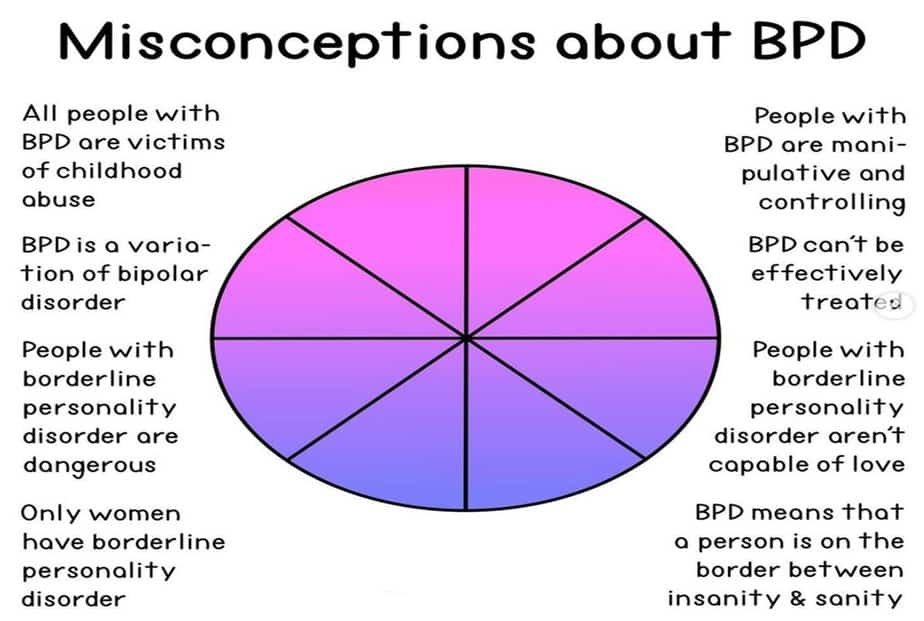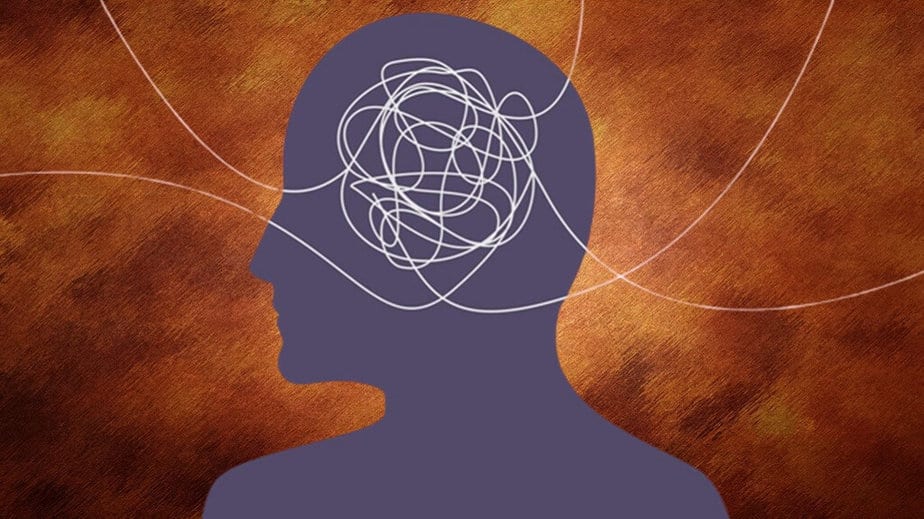Borderline personality disorder, or BPD, has been quite hyped of late, perhaps due to the increasing incidence of this mental disorder among individuals. As per estimations, around 1.4% of individuals go through BPD in the United States, which amounts to about 5 million of the population. Borderline personality disorder comes with some basic signs like emotional stability, disturbed thoughts, and impulsive behavior.
More than facts, there are several myths about BPD doing the rounds, portraying it as a serious and incurable condition. People with BPD are said to have an increasingly dramatic and attention-seeking behavior.
Common Misconceptions about BPD
Dispelling myths is key to understanding BPD. The table below confronts common misconceptions, offering clarity and fostering empathy.
Myth Fact
BPD is manipulative and for attention BPD behaviors often stem from coping with deep emotions, not intentional harm.
Healthy relationships are impossible with BPD With treatment, people with BPD can form strong, healthy relationships by learning emotional control and communication.
BPD leads to violence People with BPD aren't inherently violent; intense anger doesn't equal danger.
BPD is due to weak character BPD has genetic and environmental roots, not just personal choices.
BPD can't be improved Treatments like dialectical behavior therapy significantly help people with BPD.
BPD is just attention-seeking BPD causes real emotional distress; support and compassion are needed, not judgment.

Becky Lindquiste Sheds Light on BPD Myths
To debunk most BPD myths, we interviewed Ms. Becky Lindquisite, who has made a mark in psychology as an esteemed clinical psychologist. Ms. Lindquisite has always been committed to improving the mental health of individuals. Besides her clinical commitments, as a mental health writer, she aims to improve people’s mental well-being.
Let’s look into this exciting interview with Ms. Becky Lindquisite, where she presented some interesting facts about BPD, demystifying some preconceived notions.
Q1. Is BPD rare?
BPD is relatively rare but not as rare as you think it to be. If we go by the estimations, approximately 1 in 100 individuals live with this condition. In the United States, around 1.4% of people go through this mental disorder.
If we’re to compare the data doing the rounds, BPD is rarer than bipolar disorder, which affects about 2.8% of the adults living in the United States. Contrastingly, it is less rare to schizophrenia, which affects 1.2% of the U.S. population and is just 0.32% globally (1:300).
Q2. BPD only occurs in women- Is this a fact or myth?
I had a mother of an 18-year-old boy coming anxiously to my clinic the other day to re-confirm her son’s BPD diagnosis. “Isn’t this a girl thing”? That’s what she said. It was tedious to explain to her that BPD can happen to anyone and it isn’t gender specific.
BPD doesn’t only occur in women, but most of the diagnosed BPD cases are in women. The male-to-female BPD ratio is 75:25 (%). This is the data of the diagnosed cases. That doesn’t justify that men are less affected by this condition. Most of the time, it is misdiagnosed as depression or PTSD (post-traumatic disorder) because of the intense emotions displayed by men.
Q3. “My daughter has a borderline personality disorder, and many state bad parenting as the reason. I have tried my utmost to bring her in the best possible way. Am I a bad mother?”
Before you are too hard on yourself, let me tell you that the borderline personality disorder in your daughter doesn’t mean you are a bad parent. It is also important to mention that sometimes, parenting styles could trigger some BPD symptoms.
Authoritative parents exerting too many rules and regulations could unknowingly put their kids at risk of BPD by triggering insecurity and low self-esteem in them. The same goes for parents who are too liberal in setting any discipline or remain detached from their children’s lives. In such cases, abandonment and fear in the kid could lead to BPD.
So, from the start, it is essential to keep an eye on your parenting style, neither commanding nor too liberal.
Q4. BPD is seen in those aged 18 and above. Is it true or a myth?
This is one of the biggest misconceptions. Many think that BPD occurs in women above 20 or more than that. There isn’t truth to this fact. It has been pretty confusing for clinicians as well to diagnose an individual with BPD before they’ve reached 18.
During adolescence, a child goes through a lot of emotional turmoil, which may often manifest into BPD-like symptoms at times. To confirm a BPD diagnosis in someone below 18, the individual should have the symptoms for not less than a year. Self-harm is one of the notifying symptoms of BPD.
Observations showed that self-injury began before 12 in around 32.8% of individuals diagnosed with BPD. In 30.2%, self-injury happened during their adolescence. Whereas. 37% of the people displayed self-injury traits in their adulthood.
Q5. You cannot treat BPD- how true is this?
There isn’t a cure for BPD. However, with proper management and treatment, many people have managed their symptoms and recovered significantly. The other day, I was chatting with my fellow counselor.
She says that once a young adult with BPD crosses 20, their brain starts developing better than before. They can better understand themselves and know what is best for them. This helps them to take charge of their mental health.
Q6. Are people with BPD deprived of leading life independently?
If someone tells you that BPD is the end of it, consider it a myth and move on. If you’ve fractured your leg, you won’t live with it all your life. Will you? Similarly, when diagnosed with BPD, you need proper treatment. Once you get that, it will be easier to manage your symptoms. There’ll be highs and lows, but that won’t deprive you of leading your life independently. Just that you should keep the therapies going till the time you need them.
Q7. Can people with Borderline personality disorder be suicidal?
Well, you cannot pass this as a myth as this is true, especially if you do not take precautions on time. Self-harm, which involves cutting, hitting, or even burning oneself, is one of the symptoms of BPD. Rejection, disappointment, and abandonment are primarily responsible for such behavior. CBT (Cognitive behavioral therapy) helps to manage suicidal thoughts, anger, anxiety, and insecurity to a greater extent.
Q8. Are people with this disorder dangerous?
No, not at all. People with BPD aren’t dangerous. However, people with BPD have issues managing their anger, which could trigger impulsive actions, leading to self-harm or even harming others psychologically, verbally, physically, or emotionally.
If one can identify the triggers of angry outbursts, they’ll be able to lessen their destructive behaviors significantly.
Q9. Is BPD similar to bipolar disorder and schizophrenia?
People often tend to connect one to the other. But all three of them are different disorders, though the symptoms could sometimes coincide, mainly mood swings and impulsiveness. This often creates confusion. Bipolar disorder affects the mood, while BPD impacts the personality.
Similarly, cognitive dysfunction is more prominent in schizophrenia than BPD. The onus lies on the clinician to understand the symptoms and give an accurate diagnosis for prompt treatment.
Q10. Is it BPD or attention-seeking behavior?
If you label someone with BPD as an attention-seeker, you are ignoring the distress they are in. Attention-seeking behavior is one of the symptoms of BPD. They struggle to cope with their thoughts and feelings. Seeking attention is their way of reaching out for help.
Final Thoughts
The myths about BPD are endless. The onus lies on counselors and therapists to counsel the families of those with BPD. When a person with this disorder gets proper family support, it helps him cope with his condition with ease.
Ms. Lindquiste has a note for the readers. She said, “If you are distressed or need to talk, feel free to check my LinkedIn profile and connect.
Related articles:
